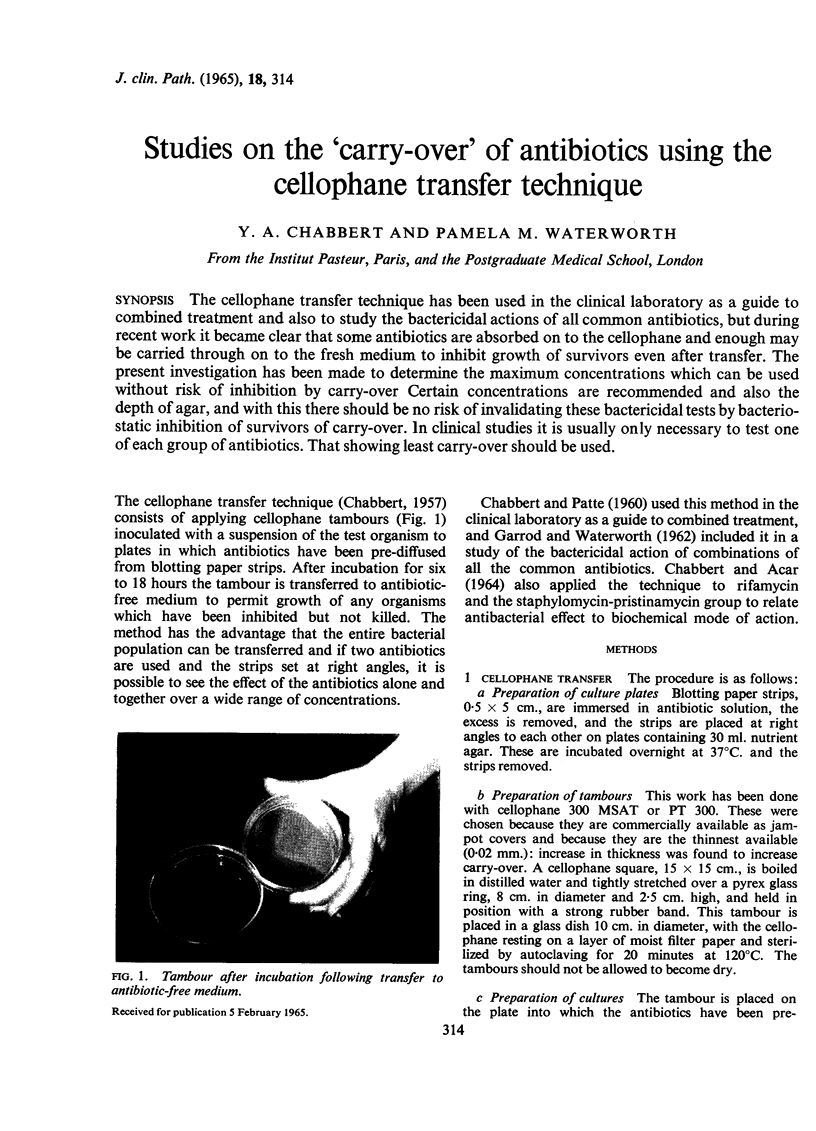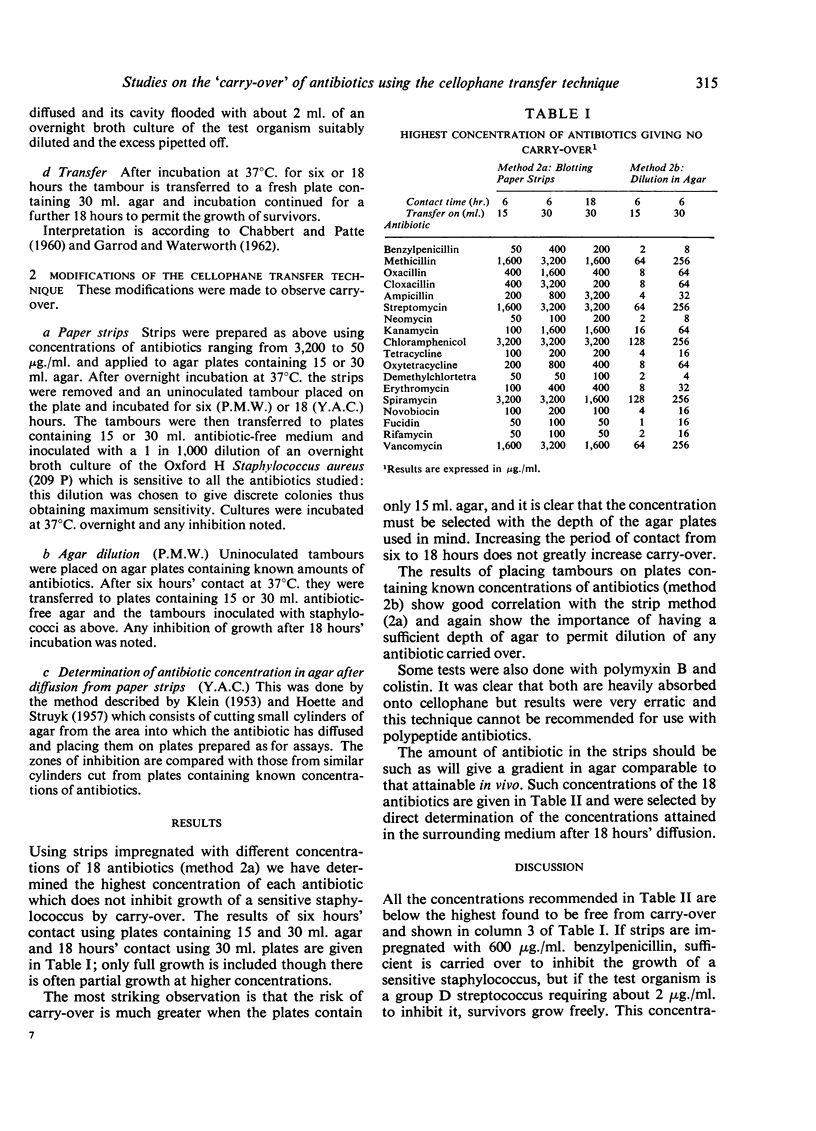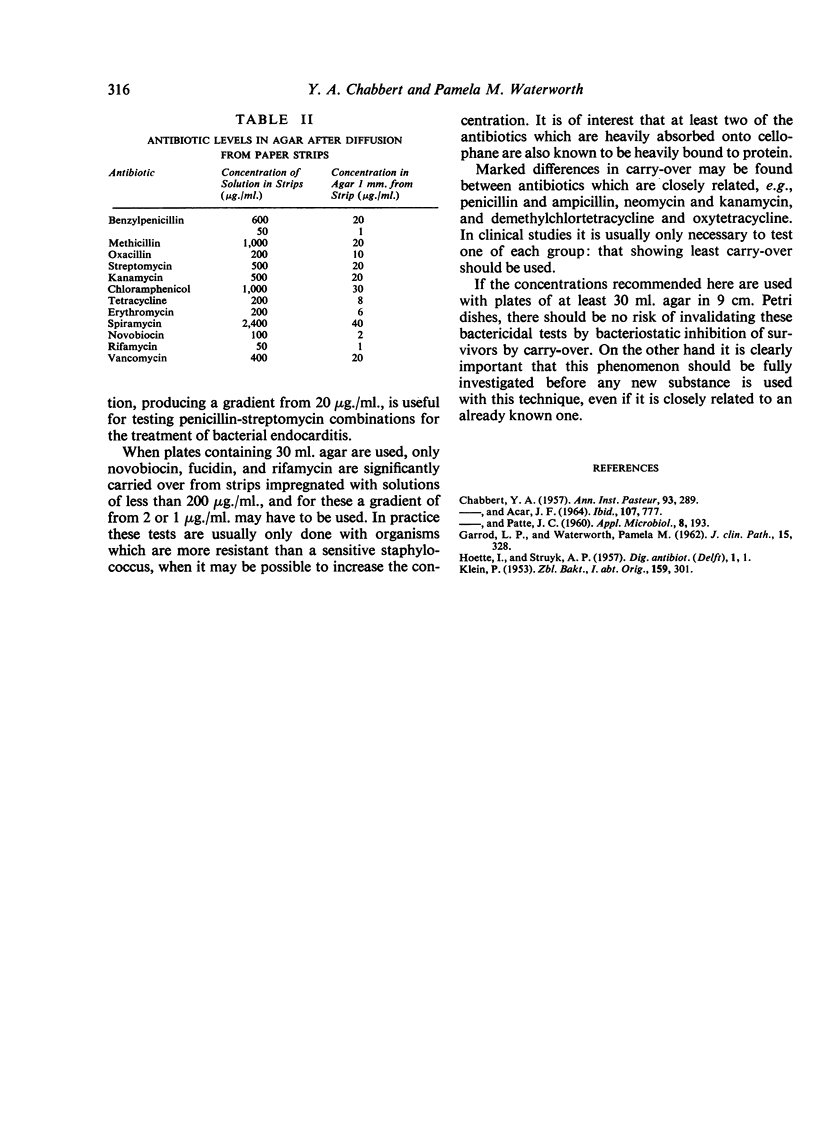Abstract
The cellophane transfer technique has been used in the clinical laboratory as a guide to combined treatment and also to study the bactericidal actions of all common antibiotics, but during recent work it became clear that some antibiotics are absorbed on to the cellophane and enough may be carried through on to the fresh medium to inhibit growth of survivors even after transfer. The present investigation has been made to determine the maximum concentrations which can be used without risk of inhibition by carry-over Certain concentrations are recommended and also the depth of agar, and with this there should be no risk of invalidating these bactericidal tests by bacteriostatic inhibition of survivors of carry-over. In clinical studies it is usually only necessary to test one of each group of antibiotics. That showing least carry-over should be used.
Full text
PDF


Images in this article
Selected References
These references are in PubMed. This may not be the complete list of references from this article.
- CHABBERT Y. A., ACAR J. F. INTERACTIONS BACT'ERIOSTATIQUES ET BACT'ERICIDES CHEZ LES ANTIBIOTIQUES DU GROUPE DE LA STREPTOGRAMINE. Ann Inst Pasteur (Paris) 1964 Dec;107:777–790. [PubMed] [Google Scholar]
- CHABBERT Y. A., PATTE J. C. Cellophane transfer: application to the study of activity of combinations of antibiotics. Appl Microbiol. 1960 Jul;8:193–199. doi: 10.1128/am.8.4.193-199.1960. [DOI] [PMC free article] [PubMed] [Google Scholar]
- CHABBERT Y. Une technique nouvelle d'étude de l'action bactéricide des associations d'antibiotiques: le transfert sur cellophane. Ann Inst Pasteur (Paris) 1957 Sep;93(3):289–299. [PubMed] [Google Scholar]



